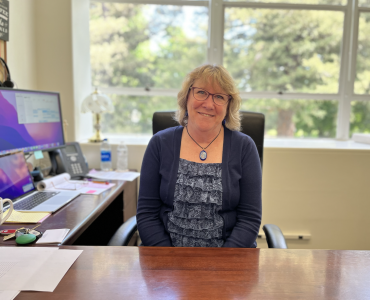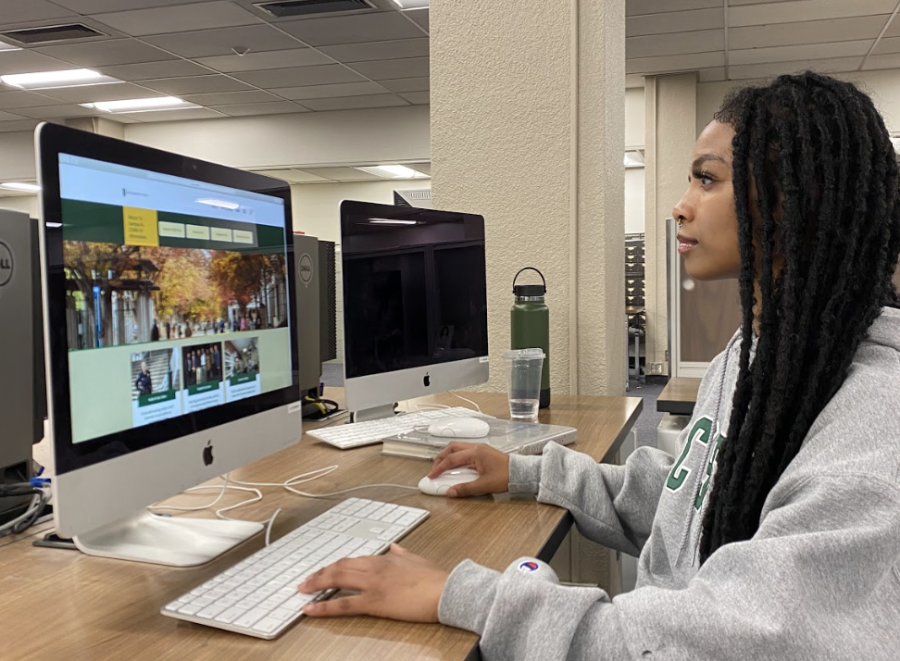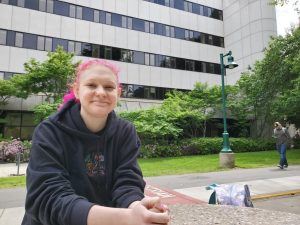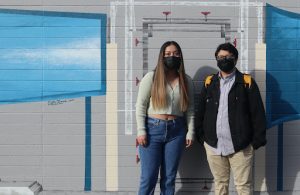‘Why are we going backwards?’ Students want more online options
75 to 80 % of courses to be in-person this fall
Jasmine Joseph sits inside the University Library on Tuesday, April 12, 2022. Joseph is one of many students who have struggled to find online options for next semester as Sac State hopes to bring more students back on campus.
April 25, 2022
Online options have been a solution to many students and faculty while they reassess their priorities like taking care of their health, their family and adjusting their schedules and lifestyle during the pandemic.
As Sac State pushes to move back to in-person, many say they feel uneasy.
Tiara Cardenas, a fourth year criminal justice major, sent an email to her department chair to express her concern about the lack of online classes being offered next semester.
She said her concerns stem from the fact that she is frequently exposed to immunocompromised individuals at home and at work and is not comfortable going back in person.

“I am very much still protecting myself and taking care of other people around me, because I do live with my parents who are in their 50’s, and I have an autistic brother,” she said. “My part-time job is to take care of people with disabilities.”
According to Dr. Christine Miller, the vice provost of student academic success, students can expect the course modalities for fall 2022 to be of the same proportion as this semester, if not with even more in-person options.
This means that approximately 75 to 80 percent of courses would be in-person, while 25 percent or less would be online.
Before the pandemic, over five percent of courses were being offered online, however, the school does not anticipate returning to that level, Miller said.
She said Sac State offers a limited amount of online degrees, but out of all degrees on offer, less than five percent are online.
“We have a responsibility as a higher education institution to provide a pathway for all students to be able to complete their degree in-person or online,” Miller said. “There may be an opportunity in an online program where students are provided the option to come to face-to-face instruction, but they would not have to do it to get the degree.”
Cardenas said she feels frustrated that the school is taking online learning opportunities away from her.
She said that online learning gives her a chance to be present and she can offer help to her family while still getting her education.
“Many of us have adapted our lives to online learning,” Cardenas said. “I would say I am one of them because my life has completely changed,”
Cardenas said taking classes exclusively online has helped her see an improvement in her grades.
“The advantage of being online is it is just being able to keep it at a pace of a semester but doing it at your pace,” she said. “Another advantage of being online is time management since I do not have to worry about commuting and traffic.”
Jasmine Joseph, a second year health science major, said she has one class in person and two other classes online on the same day. She said she likes that online learning is less distracting and recorded lectures are something she can go back and look at in her free time.
She said asking professors questions, doing group work and having more socializing experiences are better in-person.
“There are pros and cons to both,” Joseph said. “I definitely like a mixture of options instead of just being on campus.”
Sue Escobar, a Sac State criminal justice professor, said she is concerned on behalf of her students and herself about the push to go back to in-person and how Sac State does not have enough online offerings for students.
“I understand the push to get students back to campus, but it just seems like they are talking about how we are going to get back as if the pandemic never happened,” Escobar said.
Escobar said the university is missing out on an opportunity after spending all its time doing workshops to train faculty on online education.
“In-person is not going to work for a lot of our students,” Escobar said. “A lot of them moved back home and home is away from campus.”
Remote work gave Escobar an opportunity to take care of herself by allowing her to move closer to her family. Online teaching and advising work well for her, according to Escobar, she is still able to teach an online course and do academic advising for roughly 660 criminal justice students this spring semester.
While the fate of course modalities lies in the hands of different campus departments, there are still options in certain programs for courses that are purely online for the upcoming semester.
A student is more likely to be able to pursue a completely online schedule if they are part of a large major with a lot of course options or if they are completing their general education requirements, according to Miller.
Technology is evolving and advancing online learning is going to be a new norm soon, according to Cardenas, who said she hopes Sac State can continue to expand its online course offerings.
“Why are we going backward? We have made it this far and we can continue,” she said.








































































































































